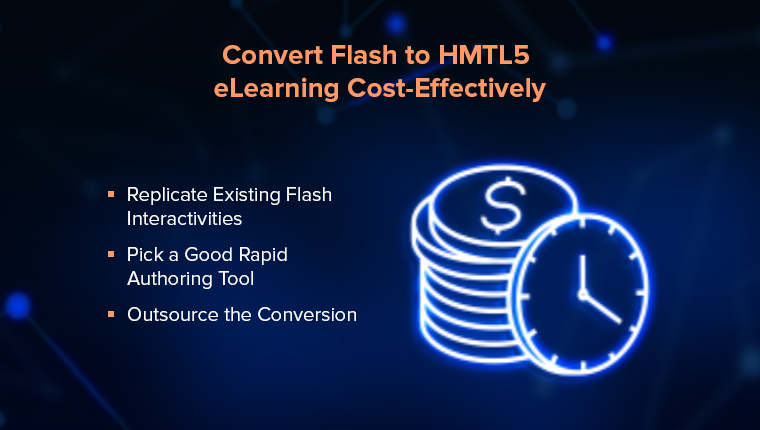3 Rapid E-learning Myths Busted

Rapid e-learning – an online course development methodology perfectly suited to the technology-enabled learning needs of companies in the 21st century. This web-based course creation methodology helps companies convert their classroom materials into online courses quickly, in an effective manner. Today, it is possible to develop a 60-minute e-learning course in about 3 weeks, using this methodology.
The cornerstone of online course development methodology is rapid authoring software such as Articulate Storyline, Adobe Captivate, and Lectora Inspire. These tools can be used easily without any knowledge of programming. This allows learning professionals such as subject matter experts (SMEs) and instructional designers (IDs), who don’t have coding skills, to take an active part in the development of web-based learning resources.
Despite these benefits of rapid e-learning, many companies are hesitant to adopt the online course development methodology because of three widely-held misconceptions. Let us see what they are and why they are not true.
1. Rapid e-learning results in online courses of poor quality
Many in the L&D world believe that because this methodology shortens e-learning development timelines, the quality of courses will be compromised. This is not true. Most rapid authoring tools come with built-in templates, and these go a long way in reducing the time taken to develop e-learning courses. These templates can be customized according to learning needs and eliminate the need to create the course from scratch.
2. Online courses are developed just by transferring content from PPT files
It is true that the rapid e-learning development methodology leverages existing instructor-led training (ILT) content such as PowerPoint presentations to create online courses. However, this doesn’t mean the PPT files can be published online, as they are, using a rapid authoring tool. There are various tasks to be performed before a classroom presentation can be converted into an online course such as the following:
- Bridge gaps in the learning content: Most ILT presentations contain only 50% of what is actually taught to the learner and the rest 50% is conveyed by the knowledge and effectiveness of the instructor in the form of examples, stories, and elaborations. So, an instructional designer must make sure to cover the missing 50% to give a logical flow to the content.
- Create a structure for the online course: Content in a classroom PowerPoint presentation must be organized logically by breaking it into course units with topics and subtopics, so that the learner can understand the essential aspects of the course.
- Add interactivities: In most cases, classroom presentations are devoid of learning interactivities, which are necessary to hold the attention of the learner in a self-paced, web-based learning environment. Developers of online courses need to address this shortcoming when they convert PPT files, used in ILT sessions, to online courses.
For more information on the conversion of PowerPoint presentations to technology-enabled learning resources, check out the interesting post How to Convert a PowerPoint to Instructionally-Sound E-learning Courses.
3. Interactive courses cannot be developed using rapid e-learning
Many people believe that rapid authoring tools lack the power of Adobe Flash, which was used extensively to develop online courses, rich in interactivities, prior to the advent of rapid e-learning. Web-based course authoring software such as Articulate Storyline can be used to create Flash-like interactivities, quickly, with minimal expenditure, thanks to a wide array of inbuilt templates.
We thus see that rapid e-learning enables companies to develop good online courses fast, at low cost. Would you like to add to this list of myths? Please do so.





